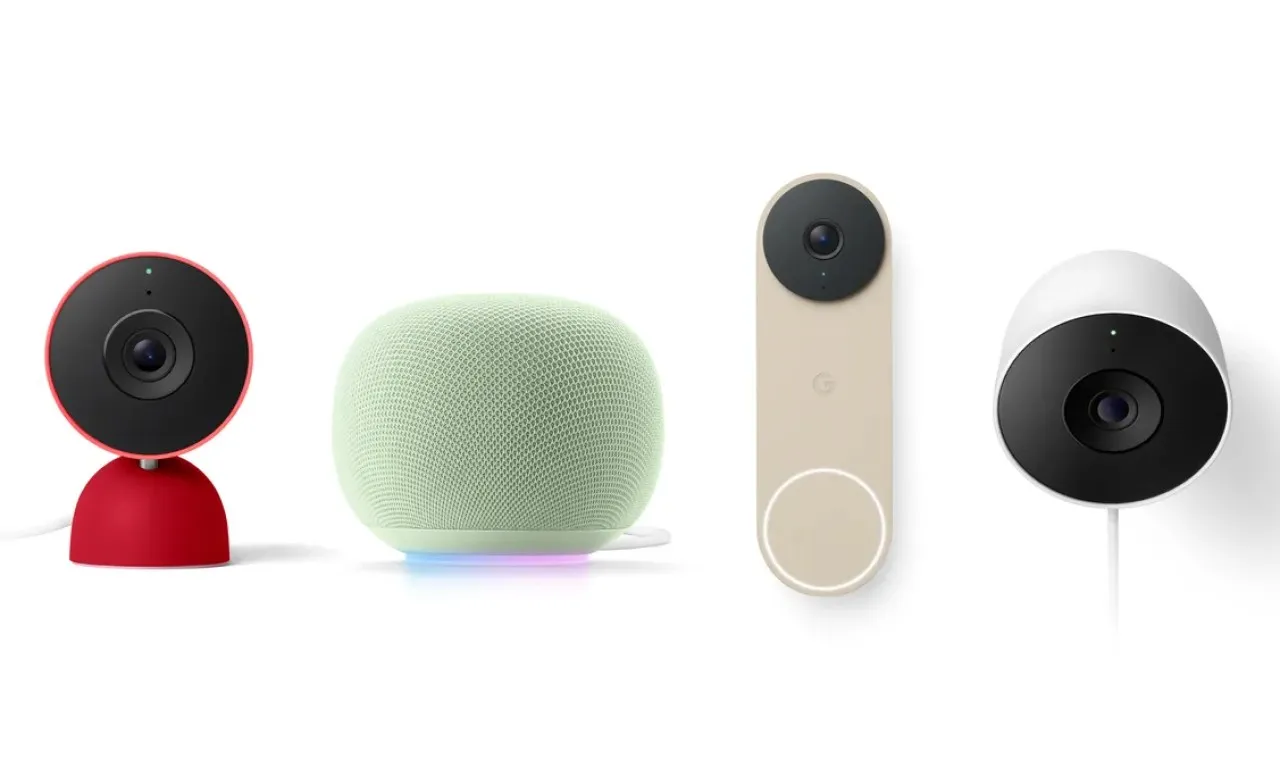Welcome to the future of the smart home. If you’ve been following the world of tech, you know that things are moving at lightning speed. It feels like just yesterday we were marveling at the ability to ask a smart speaker for the weather. Today, we’re on the cusp of a true revolution, and it’s all thanks to the newest Google Home devices being built from the ground up for something truly special: Gemini, Google’s most powerful AI.
This isn’t just another minor update with a slightly better speaker or a crisper screen. This is a fundamental shift in how we interact with our homes. We’re moving beyond simple commands and into an era of genuine, conversational, and proactive assistance. Imagine a home that doesn’t just react to you, but anticipates your needs. That’s the promise of integrating Gemini into the fabric of our living spaces, and it’s making the newest Google Home devices the most exciting tech release in years.
Contents
- 1 What Exactly Are the Newest Google Home Devices? A Quick Overview
- 2 The Gemini Difference: Why This AI is a Quantum Leap Forward
- 3 A Deep Dive into the Newest Google Home Devices: 5 Astounding Features
- 3.1 1. The Revamped Nest Hub: Your Ultimate Kitchen and Family Command Center
- 3.2 2. Next-Gen Nest Cams: Security That’s Genuinely Smart
- 3.3 3. The Brilliant Nest Doorbell: A Smarter Welcome Home
- 3.4 4. Upgraded Nest Audio: Hi-Fi Sound That Listens Intelligently
- 3.5 5. The Reimagined Google Home App: Your Unified Control Panel
- 4 The Competitive Landscape: How Do They Stack Up?
- 5 The Privacy Question: Acknowledging the Elephant in the Room
- 6 Is Upgrading to the Newest Google Home Devices Worth It?
- 7 The Future is Now
What Exactly Are the Newest Google Home Devices? A Quick Overview
Before we dive into the AI magic, let’s get acquainted with the hardware. The “Google Home” brand has evolved, folding into the “Google Nest” family, which now encompasses a wide range of products designed to work together seamlessly. When we talk about the newest Google Home devices, we’re referring to the latest generation of this interconnected ecosystem.
This lineup includes a refresh of fan favorites and potentially some new surprises:
- Google Nest Hub: The central smart display that acts as your visual command center.
- Google Nest Audio: The premium smart speaker for music lovers who also want a powerful assistant.
- Google Nest Cam (Indoor/Outdoor, Wired/Battery): Your intelligent eyes for home security.
- Google Nest Doorbell: The smart way to see who’s at your door, from anywhere.
- Google Nest Wifi Pro: The mesh Wi-Fi system that blankets your home in fast, reliable internet.
While each device is impressive on its own, their true power is unlocked when they work in concert, orchestrated by the new, super-intelligent Google Home app and powered by the brains of Gemini.
The Gemini Difference: Why This AI is a Quantum Leap Forward
So, what’s all the fuss about Gemini? You’ve probably heard the term, but let’s break down why it’s such a monumental upgrade for the newest Google Home devices. Gemini is what Google calls a “multimodal” AI. In plain English, it means the AI can understand, process, and combine different types of information at once—text, images, audio, and even video.
Previous versions of Google Assistant were fantastic at answering specific questions. You ask, it answers. It was a transaction. Gemini aims for a conversation. It understands context, remembers previous parts of your discussion, and can reason through complex, multi-step requests. This is the core reason the newest Google Home devices feel so different.
Beyond Simple Commands: What Gemini Actually Does
Let’s move from the abstract to the practical. How does Gemini’s power translate into real-world benefits on your new Nest Hub or Nest Audio?
Imagine you’re in the kitchen, looking at the contents of your fridge. Instead of just asking for a chicken recipe, you could say to your Nest Hub, “Hey Google, I have chicken breasts, a bell pepper, half an onion, and some rice. What can I make for dinner in under 30 minutes that’s healthy?”
An older assistant might get stuck on the complexity. Gemini, however, can process all those variables—the ingredients, the time constraint, the health requirement—and pull up a relevant, step-by-step recipe right on the screen. It can even add the missing ingredients to your shopping list. That’s the kind of practical intelligence we’re talking about.
Proactive Assistance: The Home That Thinks Ahead
One of the most exciting aspects of the newest Google Home devices with Gemini is the move towards proactive assistance. Your home can start to anticipate what you need before you even ask.
For example, by connecting to your calendar and real-time traffic data from Google Maps, your Nest Hub might display a notification in the morning saying, “You have a 9:00 AM meeting across town. Traffic is heavier than usual, so you should probably leave in the next 15 minutes to be on time.” It’s not just a reminder; it’s actionable intelligence tailored to your specific situation. This level of integration makes the newest Google Home devices feel less like gadgets and more like genuine personal assistants.
Read Also: Google AI Mode: 9 Essential Strategies for the Secret Shift to Visual Shopping
A Deep Dive into the Newest Google Home Devices: 5 Astounding Features
Now, let’s get into the nitty-gritty. We’re going to explore five of the most astounding features and upgrades you’ll find across the latest lineup, all supercharged by the power of Gemini.
1. The Revamped Nest Hub: Your Ultimate Kitchen and Family Command Center
The Nest Hub has always been the heart of the Google-powered smart home, and the latest version takes it to a whole new level. The screen is brighter, the speakers are richer, but the real magic is on the software side.
With Gemini, the photo frame feature becomes incredibly intuitive. You can ask it to “Show me my best photos from last summer’s trip to the Grand Canyon,” and it will intelligently curate a slideshow. When you’re video calling with family on Google Meet, the camera can automatically pan and zoom to keep you perfectly in frame, a feature that feels like it has a professional director behind the scenes. In the kitchen, it doesn’t just show you a recipe; it can understand conversational follow-up questions like, “Okay, what’s the next step?” or “How many ounces are in a cup?” without you having to touch the screen with messy hands.
2. Next-Gen Nest Cams: Security That’s Genuinely Smart
Home security is all about getting the right information at the right time. Constant false alerts from a branch swaying in the wind are not just annoying; they can cause you to ignore a real threat. The newest Google Home devices in the Nest Cam family tackle this head-on with on-device processing.
According to Google’s official blog, these new cameras can differentiate between a person, an animal, a vehicle, and a package with remarkable accuracy, right on the device itself. This means alerts are faster and more relevant. Gemini enhances this by allowing for more natural language queries. You could ask your Nest Hub, “Show me the clip from yesterday when the mailman dropped off a package,” and the system can instantly find and display that specific event, saving you from scrubbing through hours of footage. This is a huge leap in usability for home security.
3. The Brilliant Nest Doorbell: A Smarter Welcome Home
The latest Nest Doorbell isn’t just about seeing who’s there; it’s about context. It features a taller, head-to-toe field of view, so you can see a person standing on your porch as well as the package they left at their feet.
Where Gemini adds a new layer is in communication. When you can’t get to the door, you can use pre-set quick responses. But with Gemini, you can imagine a future where the assistant could have a basic, natural-sounding conversation. For instance, you could instruct it to tell a delivery driver, “Please leave the package behind the planter. Thanks so much!” This makes interactions smoother and more helpful, turning your doorbell into a true virtual doorman.
4. Upgraded Nest Audio: Hi-Fi Sound That Listens Intelligently
For the audiophiles, the Nest Audio has always been a top contender for the best-sounding smart speaker in its class. The latest version continues this legacy with even richer bass and crisper highs. But the “smart” part of the speaker gets a massive IQ boost from Gemini.
Music discovery becomes a breeze. You’re no longer limited to asking for a specific song or artist. You could try something like, “Hey Google, play that upbeat, funky song from that one car commercial.” Gemini’s vast knowledge base and contextual understanding give it a much better shot at figuring out what you mean and starting the music. It can also create dynamic playlists on the fly based on mood, activity, or even a combination of genres, making it the perfect DJ for any occasion. The newest Google Home devices truly understand the nuances of your requests.
5. The Reimagined Google Home App: Your Unified Control Panel
The hardware is only half the story. The glue that holds the entire ecosystem of the newest Google Home devices together is the completely redesigned Google Home app. The new interface is cleaner, more intuitive, and, most importantly, built to handle the complexities of a modern smart home.
Creating automation routines is now simpler and more powerful. With Gemini’s logic, you can build routines with more complex triggers and conditions. For example, you could create a “Movie Night” routine that not only dims the smart lights and turns on the TV but also checks if it’s after 8 PM and if the front door is locked before starting. This level of granular control, presented in an easy-to-use interface, is what elevates a collection of smart gadgets into a truly cohesive and intelligent home environment.
The Competitive Landscape: How Do They Stack Up?
No device exists in a vacuum. To provide a balanced view, it’s essential to see how the newest Google Home devices compare to their biggest rivals in the smart home space: Amazon’s Alexa and Apple’s HomeKit.
Google Nest vs. Amazon Alexa (Echo)
This has been the heavyweight bout of the smart home world for years. Amazon has a massive head start and an enormous library of “skills” and compatible devices. Alexa is everywhere.
However, Google’s main advantage has always been the power of its search engine and knowledge graph, making Google Assistant traditionally better at answering complex questions. With Gemini, that gap widens into a chasm. While Alexa is excellent at transactional commands, Gemini’s conversational and reasoning capabilities are on another level. For users who want a truly intelligent assistant that can handle nuanced, multi-part requests, the newest Google Home devices present a compelling case. Amazon is working on its own advanced AI, but for now, Google appears to have the lead in pure AI intelligence.
Google Nest vs. Apple HomeKit (HomePod)
Apple’s approach is, as always, centered around its tightly integrated ecosystem and a strong emphasis on privacy. HomeKit is known for being incredibly secure and reliable, and for users deeply embedded in the Apple world (iPhone, Mac, Apple Watch), it offers a seamless experience.
Where Apple has historically lagged is with its assistant, Siri, and a smaller selection of compatible third-party devices. The HomePod is a phenomenal speaker, but Siri’s capabilities are often seen as more limited compared to Google Assistant. The newest Google Home devices with Gemini offer a more open platform with broader device compatibility and a significantly more powerful AI assistant. The choice often comes down to a user’s priority: the walled-garden security of Apple or the powerful, open intelligence of Google.
The Privacy Question: Acknowledging the Elephant in the Room
We can’t talk about putting smart, always-listening devices in our homes without addressing privacy. It’s a valid and crucial concern for many consumers. How are the newest Google Home devices handling your personal data, especially with an AI as powerful as Gemini?
Google emphasizes a multi-layered approach to security and privacy. A key development in recent years, which continues with the latest hardware, is the push towards on-device processing. As mentioned with the Nest Cams, many AI tasks, like identifying a person versus a pet, happen directly on the device itself. This means the raw video footage doesn’t have to be sent to the cloud for analysis, which is a major win for privacy.
For requests that do need to be processed in the cloud, Google provides users with tools in the Google Home and Google Account settings to review and delete their activity history. According to their privacy policies, this data is used to improve the service and personalize the experience, and they state that audio recordings are not kept by default. It’s a trade-off between privacy and the advanced, personalized features that a powerful AI can offer. For consumers, it’s essential to be aware of the settings, understand the controls available, and make an informed decision.
Is Upgrading to the Newest Google Home Devices Worth It?
This is the million-dollar question. You have an older Google Home Mini or a first-gen Nest Hub. Do you need to rush out and buy the latest and greatest? The answer depends on what you value in a smart home.
Who Should Upgrade Immediately?
If you are a tech enthusiast who loves being on the cutting edge, this is a no-brainer. The leap in AI capability with Gemini is significant and genuinely changes the user experience. Likewise, if you are heavily invested in the Google ecosystem (using Android, Google Photos, Calendar, and Maps daily), the deep, proactive integration offered by the newest Google Home devices will feel like a magical upgrade to your daily life.
Who Can Probably Wait?
If you primarily use your smart speaker to play music, set timers, and check the weather, your existing devices will continue to work just fine. While the Gemini-powered features are impressive, they are most impactful for users who want to push the boundaries of home automation and conversational AI. If your smart home needs are simple, you can likely wait for your current devices to run their course before making the jump.
The Future is Now
The launch of the newest Google Home devices integrated with Gemini AI is more than just a product release; it’s a statement of intent. Google is signaling a clear vision for the future of ambient computing—a world where technology seamlessly and intelligently assists us in the background of our lives. We’re moving away from clunky interfaces and rigid commands toward natural, intuitive, and truly helpful interactions.
This new generation of devices, from the camera to the speaker to the central hub, represents the most significant step toward that future we’ve seen yet. It’s an exciting time to be building a smart home, and with these powerful new tools, our homes are about to get a whole lot smarter.




